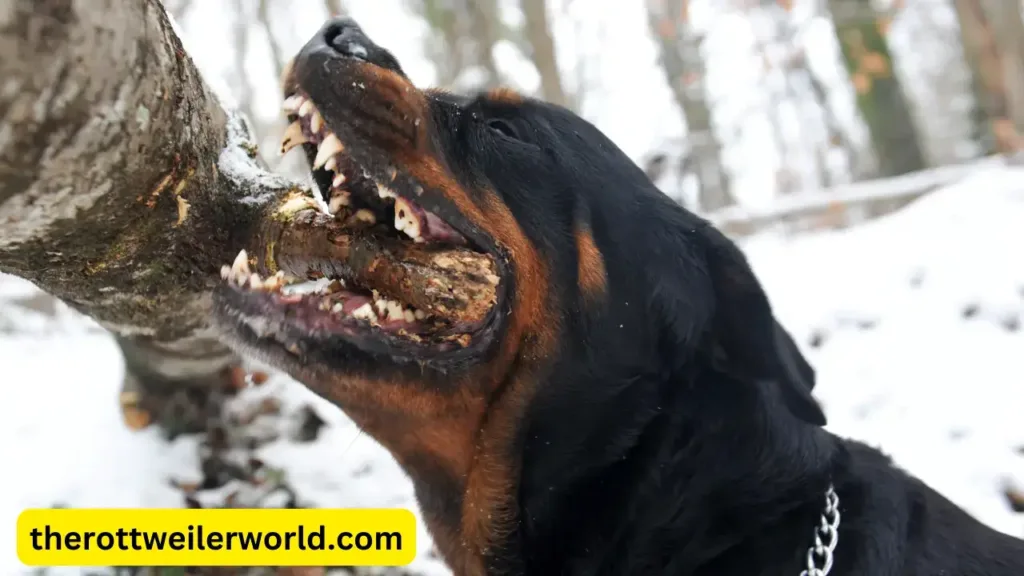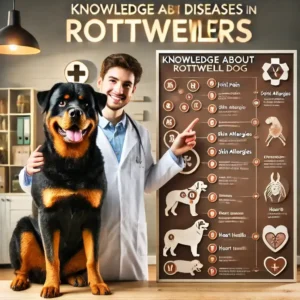Rottweilers are known for their strength, which is why they tend to be misunderstood. By discovering facts and myths about The Rottweiler Bite Force and the quality of food, they are ready to appreciate these wonderful animals and ensure that the environment is healthy for them, their lifestyle, and their behavior. Dispel myths and describe their purpose and relationship to food and other types of seeds.
Key Takeaways
- Understanding the life structures of a Rottweiler’s jaw makes a difference in clarifying their effective chomp.
- Hereditary qualities and specific breeding play a noteworthy part in a Rottweiler’s nibble strength.
- The tetanus myth is untrue; Rottweilers don’t have a component that locks their jaws.
- Rottweiler’s nibble drive is solid compared to other breeds, but appropriate preparation and socialization are significant.
- Instruction and mindfulness around Rottweilers can offer assistance to anticipate mistaken assumptions and advance secure intuitiveness.
The Life structures Behind Rottweiler Chomp Constrain
Understanding the anatomical subtle elements that contribute to a Rottweiler’s chomp drive makes a difference as we appreciate the special plan of this breed. The blend of a solid jaw, effective muscles, and exact estimation strategies appears to be the astounding control behind those jaws.
Acquired Characteristics
Rottweilers have a solid nibble drive, somewhat due to their hereditary cosmetics. Over numerous years, particular breeding has favored characteristics that contribute to their capable chomp. Acquired characteristics like jaw quality and muscle composition play a critical part in this.
Developmental Adjustments
The development of Rottweilers has had a significant impact on demand. Their ancestors needed strong snacks to catch and hold prey, which was essential for survival. This development has purified their hearts and now makes them proud.
Particular Breeding
Specific breeding has assisted in upgrading the Rottweiler’s chomp drive. Breeders have centred on characteristics like jaw quality and muscle mass, guaranteeing that these mutts stay solid and viable. This cautious choice preparation has come about in a breed known for its amazing chomp drive.
Debunking the Tetanus Myth
Roots of the Tetanus Myth
The thought of “tetanus” has been connected to certain canine breeds, counting Rottweilers, for a long time. This myth proposes that these mutts have a special jaw component that creates their jaw bolt input. In any case, this is often not genuine. Rottweilers don’t have any physical highlight that causes their jaws to bolt. Their jaws are a bit like those of any other canine, with full development to open and near normally.
Logical Prove Against Tetanus
Logical ponderers have appeared to believe there’s no special jaw structure in Rottweilers or any other breed that would permit their jaws to bolt. On the off chance that such a highlight existed, it would be futile since the puppy wouldn’t be able to eat, play, or do any ordinary pooch exercises. Indeed, in circumstances like puppy battling, a bolted jaw would be a drawback, as the puppy wouldn’t be able to release its grasp.
Common misguided judgments
Numerous individuals accept the tetanus myth of deception and fear. This myth has driven us to pointless fear and misconceptions around Rottweilers. By reporting this story, we are ready to help people fix these dogs and move on safely. It is important to rely on concrete information instead of unfounded assumptions.
It is great for intrepid dog owners to understand the truth behind the hidden messages. Childbirth can lead to fear and bad decisions and about everywhere in the world’s products.
Comparing the Rottweiler Bite Force to Other Breeds

When comparing the Rottweiler Bite Force constraints with other pooch breeds, it becomes clear that this breed stands out. The Rottweiler’s nibble drive is nothing to mess around with at generally 328 pounds per square inch (psi), which is over normal for a puppy. This noteworthy quality could be a result of their special hereditary qualities and anatomical plan, making them dependable watches and security pooches.
Real-World Suggestions for Rottweiler Nibble Drive
Authentic Parts and Nibble Drive
Rottweilers have a long history of working with nearby people. Their noteworthy chomp drive made them amazingly protect mutts and herders. In the past, they were utilized to protect animals from predators and to drag carts stacked with products. This effective nibble was pivotal for their part in controlling huge creatures and guaranteeing the security of the group.
Modern-Day Applications
Nowadays, Rottweilers continue to serve in various departments. Utilizing the full extent of their capabilities, they can. They are often used in the police and military, where the ability to arrest suspects and convince the police is very important. In search and rescue operations, buoyancy proves useful in moving debris and addressing physical needs through its ability to float.
Security and Preparation Contemplations
The obliging bite of a Rottweiler is an essential characteristic, but it entails the requirement of reliable ownership. Through careful planning and socialization, the full benefit of this quality can be achieved. Caution is advised for business managers to demonstrate a bossy demeanor. Merging planning meetings, acclimating the dog to diverse groups of people and environments, and interpreting the dog’s body language to prevent unwanted situations from arising.
Behavioral Components Influencing Nibble Drive
Preparation and Socialization
Preparation and socialization play a colossal part in a Rottweiler’s chomp drive. Legitimate preparation can offer assistance to oversee and diminish forceful behaviors, whereas the need for socialization can lead to unusual responses. A well-trained Rottweiler is less likely to chew off fear or hostility.
Push and Animosity
Push and animosity are major variables that can impact a Rottweiler’s nibble drive. A focused or debilitated canine could nibble more forcefully. Spotting signs of unease, such as baring teeth or growling, can assist in avoiding bites.
Proprietor Impact
The conduct of the proprietor can play a crucial role in a Rottweiler’s eating habits. A calm and self-assured owner can help minimize destructive chewing by making their dog feel safe. Conversely, aggressive or harsh teaching methods can increase aggression.
Grasping the behavioral determinants that influence a Rottweiler’s nipping behavior is vital for ensuring secure and enjoyable interactions with this breed.
Advancing Secure Intelligent with Rottweilers
Instruction and Mindfulness
Knowing and sharing information about Rottweilers is the foundation for effective communication. Decoding behavior and speech enable us to detect inaccuracies. Communicating with a Rottweiler is an important skill for children to master.
They have to keep up a vital separation from sudden advancements and never aggravate the canine while it’s eating or resting.
Capable Possession
Being a dependable proprietor implies taking steps to guarantee your Rottweiler is well-trained and socialized. Proficient preparation can offer assistance. Your canine tunes in to commands and makes, beyond any doubt, you’re in control of the circumstances. Socializing your Rottweiler with diverse situations, creatures, and individuals from a youthful age can offer assistance to well-adjusted grown-ups.
Preventive Measures
To advance agreement domestically, continuously oversee intelligence between your Rottweiler and other pets. If your Rottweiler appears to have any forceful behavior, look for proficient offers of assistance instantly. Recognizing and regarding your dog’s boundaries can anticipate undesirable occurrences.
Conclusion
The frequently underestimated curious nature of Rottweilers is an alluring quality of this breed. The ability of these dogs to acquire knowledge and debunk misconceptions reveals their true nature as intelligent animals. If we are aware of this, the Rottweiler is not viewed as an intelligent puppy but as a well-rounded animal with curious abilities. With the correct information, we can offer a more confident analysis and a more profound admiration for these enchanting little dogs.
Frequently Asked Questions
A Rottweiler’s nibble constraint ranges from 328 to 350 pounds per square inch (psi), making it one of the most grounded among puppy breeds.
No, Rottweilers don’t have tetanus. The thought that they can bolt their jaws may be a myth without any logical backing.
Rottweilers are not intrinsically more forceful. Their behavior, to a great extent, depends on preparation, socialization, and the environment they are raised.
Rottweilers have a more grounded nibble constraint compared to numerous other breeds, counting German Shepherds and Pit Bulls.
The Rottweiler’s nibble constraint is impacted by its jaw structure, muscle composition, hereditary qualities, and preparation.
To guarantee secure intuitiveness, teach yourself around the breed, hone dependable possession, and take preventive measures like legitimate preparation and socialization.











